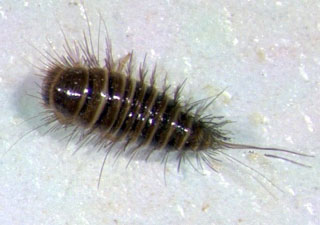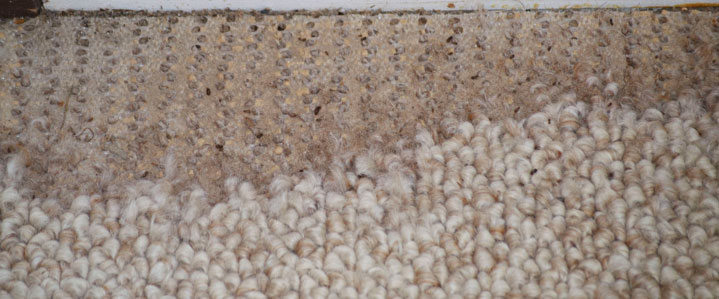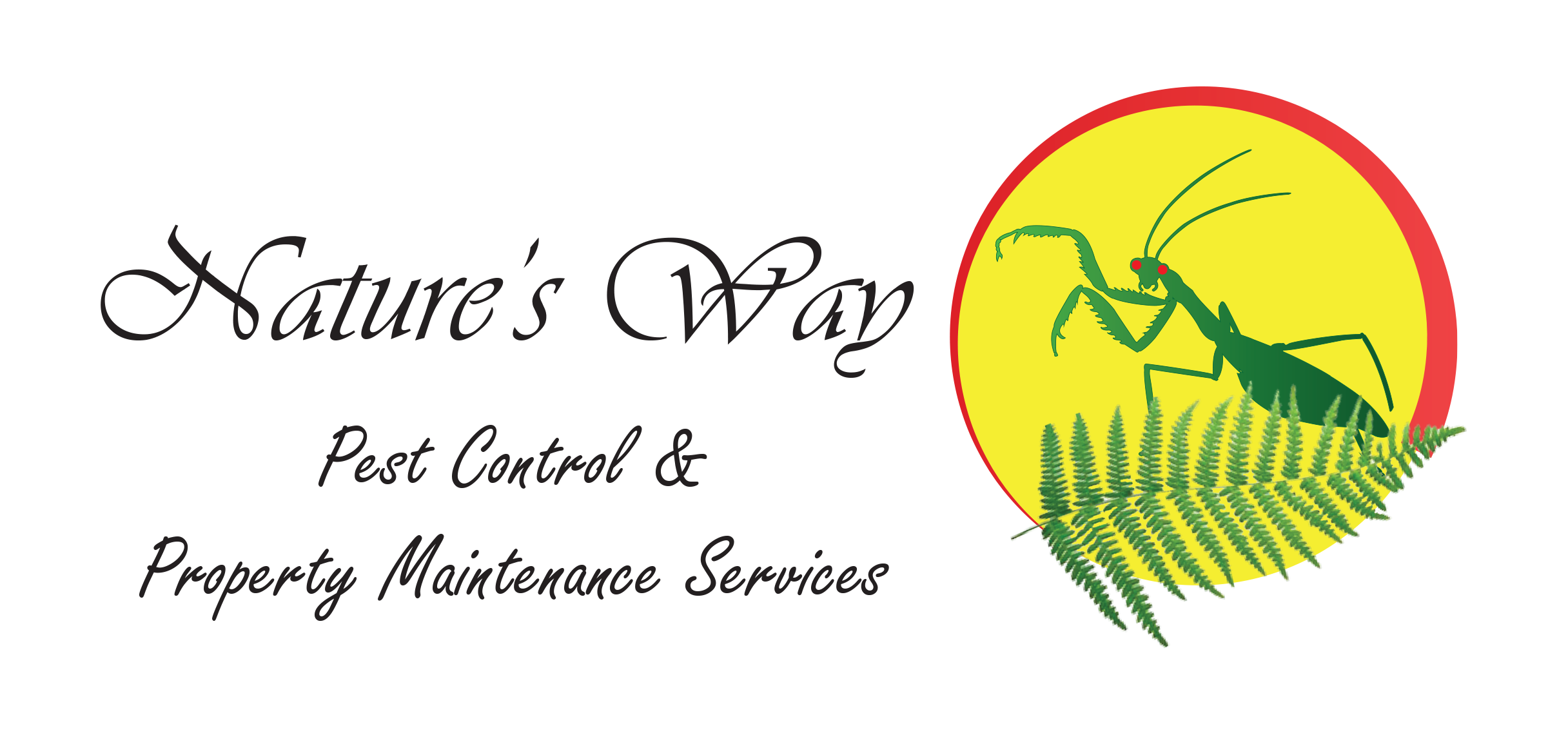Pests » Carpet Beetle

Carpet Beetle / Clothes Moth
During summer, the adults resemble small ladybird sized beetles that, more often than not, they can be seen on outdoor flowers. These beetles are harmless. The problem occurs when they inadvertently are introduced into the interior of the home either on cut flowers or through open windows and doors.

Carpet beetle larva
Carpet beetles lay their eggs in cracks or crevices of furniture or on floors near a woollen food source. Over summer months, the eggs hatch out into larvae (commonly referred to as ‘fuzzy’ or ‘woolly bears’). The damaging stage occurs over winter when the larvae feed on your carpet and begin to grow.
Can carpet beetles be seen? Actually, larvae choose to remain out of sight as they feast on the base of the carpet fibres. You are more likely to see the shed and discarded exoskeletons of pre-moulted larvae under the upper fibres (of carpet) that come loose during vacuuming.

Extensive carpet damage from carpet beetle larvae
Occasionally carpet damage is done by a common clothes moth (Tineola bisselliella). The damage caused to carpet by this moth larvae is very similar to that of carpet beetle. However you can often find clusters of the adult moth in dimly lit or darkened areas of a room. Moth larvae can be damaging to clothing especially woollen articles.
If you see any signs or think you may have a carpet beetle or clothes moth infestation – contact us at Nature’s Way to arrange an inspection and discuss all possible control solutions with you.
